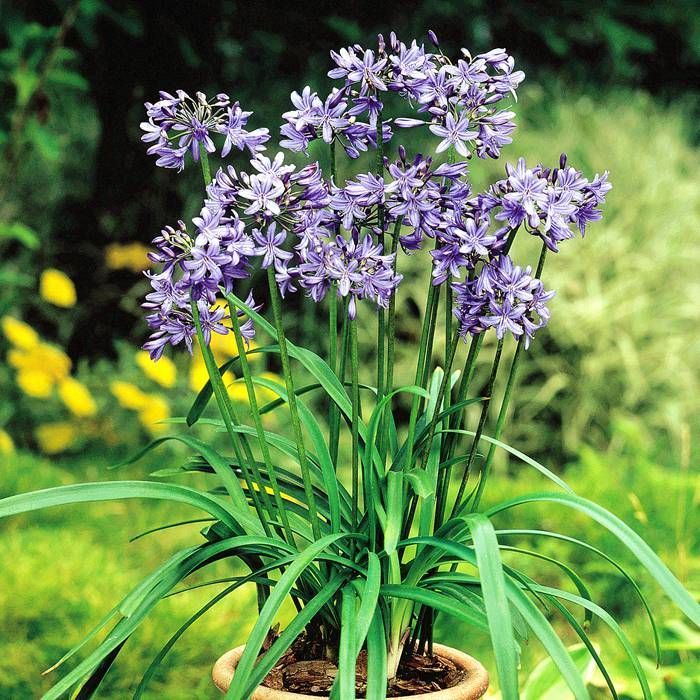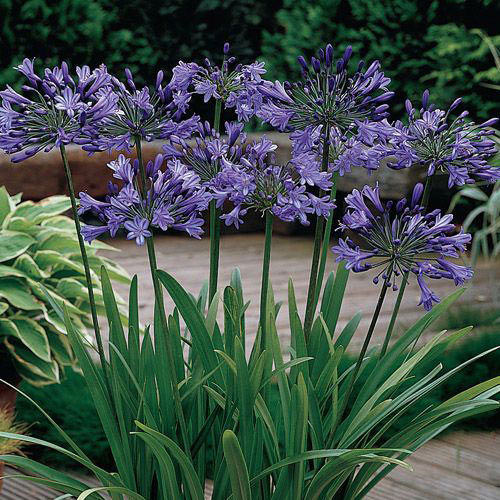Agapanthus Growing Conditions: Soil, Sunshine, and Watering
Agapanthus Growing Conditions: Soil, Sunshine, and Watering
Blog Article
Understanding the Art of Agapanthus Treatment: Necessary Actions for Healthy And Balanced Growth and Dynamic Blooms
In the realm of horticulture, the farming of agapanthus stands as a fulfilling venture for those that look for to support these sophisticated flowering plants. From choosing the appropriate selection to mastering trimming strategies, the journey in the direction of cultivating prospering agapanthus plants is multifaceted and holds the vital to opening the complete possibility of these organic gems.

Selecting the Right Agapanthus Variety

When selecting the appropriate Agapanthus variety for your garden, consider factors such as climate viability, bloom shade, and development behavior. Agapanthus, frequently referred to as Lily of the Nile or African lily, comes in a variety of shades varying from shades of purple and blue to white. Choose a blossom color that enhances your existing yard combination to produce an unified landscape. In addition, think about the environment in your area to make sure the Agapanthus selection you select can flourish in your details problems. Some selections are much more tolerant of chilly temperature levels, while others prefer warmer climates. Comprehending the growth behavior of various Agapanthus selections is critical for correct positioning within your garden. Some varieties have a clumping growth practice, ideal for boundaries or containers, while others have an even more dispersing nature, suitable for ground cover or mass plantings. By thoroughly reviewing these variables, you can pick the ideal Agapanthus range to enhance the elegance of your garden.
Perfect Planting Conditions
Taking into consideration the optimum environmental needs is necessary for successful Agapanthus farming. Agapanthus flourishes in well-draining dirt with a somewhat acidic to neutral pH degree. When planting, pick an area that receives full sunshine to partial color. In hotter environments, supplying some mid-day shade can stop scorching of the fallen leaves. Agapanthus plants are sensitive to chilly temperature levels and ought to be shielded from frost during cold weather.
To make sure healthy growth and vivid blossoms, plant Agapanthus bulbs at a depth of concerning 2-4 inches and space them 8-12 inches apart. Mulching around the base of the plants assists maintain moisture and subdues weed development.
Watering and Fertilizing Tips
Maintaining correct moisture levels and giving important nutrients are crucial elements in the care regimen for Agapanthus plants. It is crucial to strike an equilibrium when it comes to sprinkling Agapanthus. If overwatered, these plants like continually damp dirt yet are susceptible to root rot. Throughout the expanding period, additional reading water deeply once a week, making certain the soil is well-draining to avoid waterlogging. In hotter environments or during periods of dry spell, more regular watering may be required to keep the dirt evenly wet. Nonetheless, lower watering in the winter to protect against waterlogged problems.
Fertilizing Agapanthus is essential for promoting healthy growth and respected blooms. Use a well balanced fertilizer, such as a 10-10-10 formula, in the early springtime as brand-new development emerges. By adhering to these watering and feeding tips, you can ensure your Agapanthus plants flourish and produce vivid, resilient flowers.
Trimming Techniques for Agapanthus
Trimming Agapanthus plants at the suitable times and with appropriate methods is vital for preserving their health and promoting optimal development and blooming. The perfect time to prune Agapanthus remains in late winter or very early spring before brand-new development emerges. Begin by getting rid of any yellowing or dead fallen leaves near the base of the plant. Cut them as short as possible without harming the arising shoots.
Deadheading spent blossoms can also reroute the plant's power right into producing even more blooms instead than setting seeds. If you desire to accumulate seeds for proliferation, leave some flowers to completely dry and mature on the plant.
Remember to use clean, sharp tools to make specific cuts and reduce the danger of introducing conditions. Agapanthus. Routine pruning will help keep your Agapanthus looking healthy and neat while guaranteeing a bountiful screen of attractive blooms
Managing Common Insects and Diseases
After guaranteeing proper trimming methods for Agapanthus, it is necessary to resolve typical pests and illness that can impact the health and vitality of these plants. One common pest that impacts Agapanthus is the Agapanthus gall midget.
Additionally, Agapanthus plants can experience from root rot if they are grown in inadequately draining soil. By being attentive and taking punctual action versus bugs and diseases, you can help your Agapanthus plants thrive and generate vivid blooms. Agapanthus.

Final Thought
To conclude, grasping the art of agapanthus treatment involves choosing the ideal variety, offering optimal growing conditions, proper watering and feeding, appropriate trimming you can try these out methods, and attending to usual bugs and diseases. By following these crucial actions, you can make certain healthy development and vivid blossoms for your agapanthus plants. Keep in mind to regularly keep an eye on and preserve your plants to promote their overall wellness and long life.
To ensure healthy growth and vivid blooms, plant Agapanthus bulbs at a deepness of about 2-4 inches and area them 8-12 inches apart. By adhering to these watering and feeding suggestions, you can ensure your Agapanthus plants grow and create dynamic, durable blossoms.
One common insect that influences Agapanthus is the Agapanthus gall midget. In addition, Agapanthus plants can suffer from origin rot if they are Source grown in inadequately draining pipes dirt. By following these necessary steps, you can make certain healthy growth and lively flowers for your agapanthus plants.
Report this page